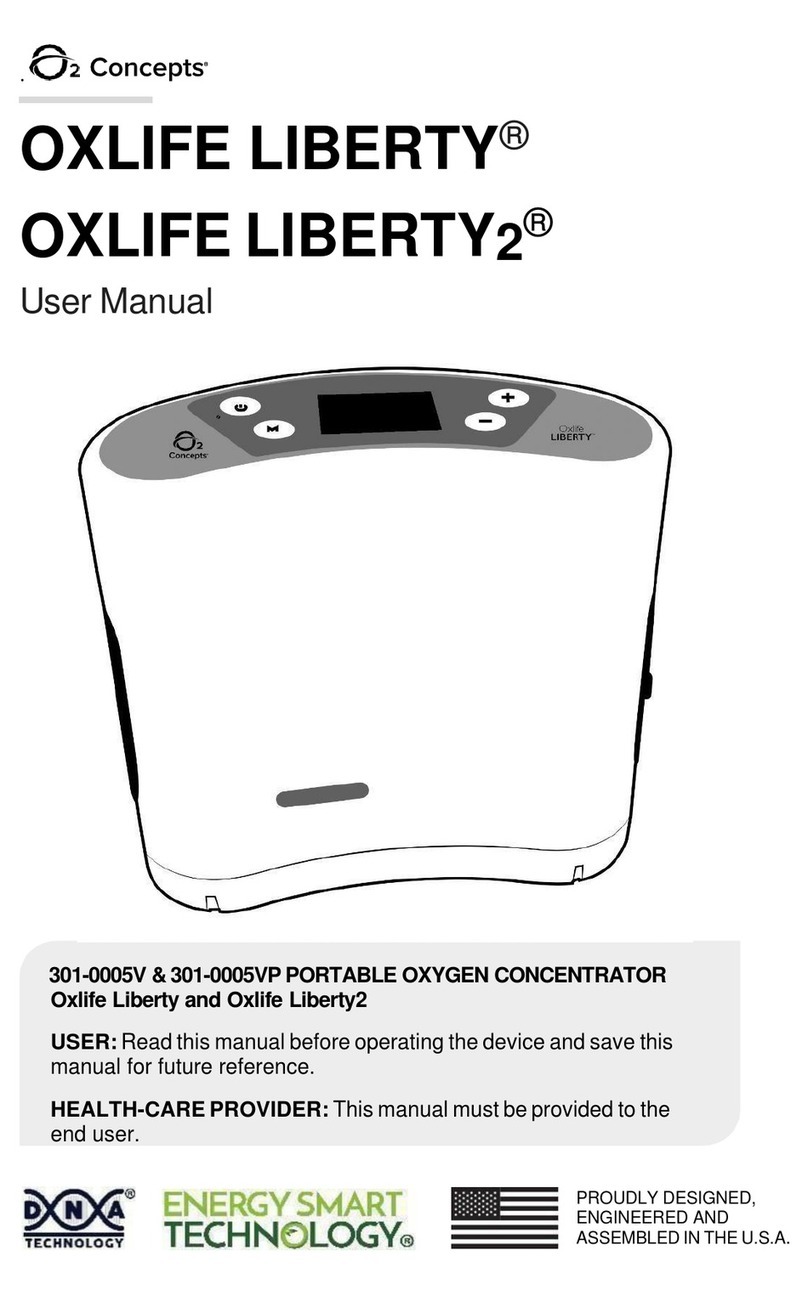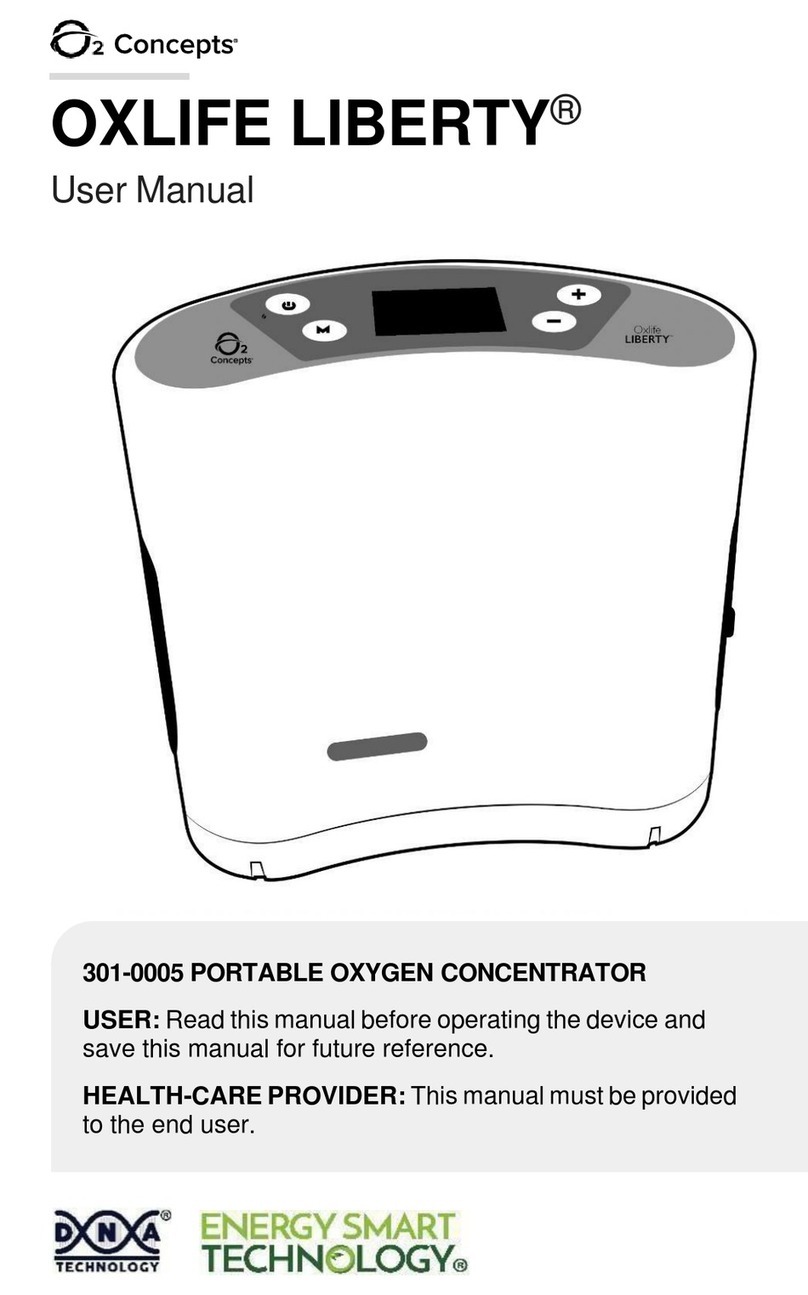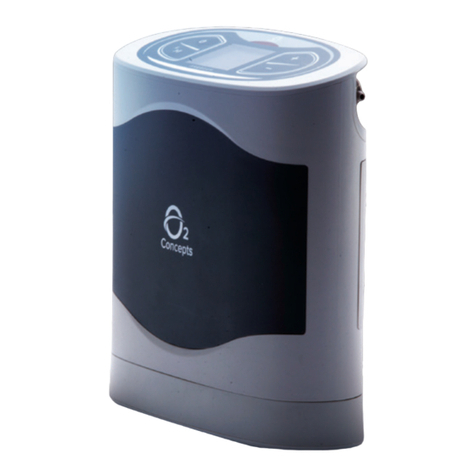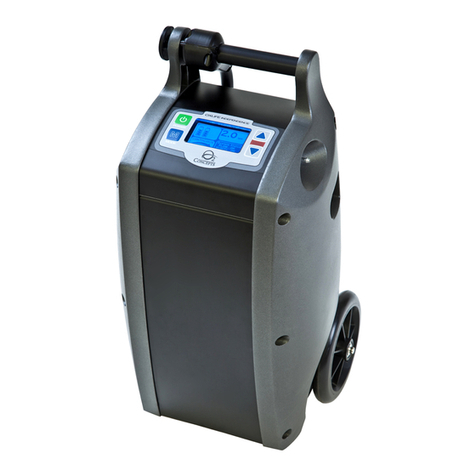
Patient Safety Guidelines
DO NOT SMOKE WHILE USING THIS DEVICE. KEEP ALL MATCHES,
LIT CIGARETTES, CANDLES, OR OTHER SOURCES OF IGNITION AT
LEAST 10 FEET FROM THE DEVICE. THIS DEVICE PRODUCES
ENRICHED OXYGEN GAS WHICH ACCELERATES COMBUSTION.
PRESCRIBEDMODE AND FLOW SETTINGS SHOULD ONLY BE
ADJUSTED UNDER THE ADVICE OF A PHYSICIAN.
Outdoor use must be conducted using battery power.
Monitor children andpets when inproximity tothe device.
Keep cannula tubingaway from children andpets to avoid danger
of choking or strangulation.
If you feel discomfort or are experiencing a medical emergency while
undergoing oxygen therapy, seek medical assistance immediately to
avoid harm.
DO NOT use the device with adamaged power cord or plug to avoid injury.
DO NOT operate thedevice onwet surfaces orinstanding water, and do not
submerge or expose to water or precipitation to avoid serious injury or
damage to the device. If the Oxlife Liberty® has been dropped, damaged,
or exposed to water please contact your authorized dealer or healthcare
provider for inspection and possible service of the device.
DO NOT come in contact with the device when wet to avoid serious injury
or the chance of shock.
Use only water-based lotions or salves that are oxygen compatible before
and during oxygen therapy. DO NOT use oil, grease, or petroleum-based
products on or near the device to prevent accidental ignition.
DO NOT lubricate fittings, connections, tubing or other accessories to avoid
the risk of fire and burns.
DO NOT use the device with an extension cord.
Open flames during oxygen therapy are dangerous and are likely to result in
fire or death. DO NOT allow open flames within ten (10) feet (3m) of the
oxygen concentrator or any oxygen carrying accessories.
Oxygen makes it easier for a fire tostart and spread.































